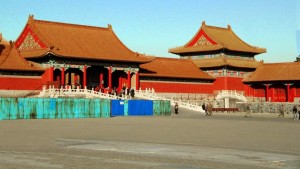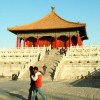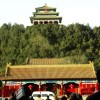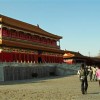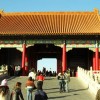- Photos
- Forbidden City of China
Forbidden City of China
TM
Tannistha Mukherjee
Updated
Explain more about the photos or videos like location, time and the specific camera settings you would have used to take these photos. Also, if you would have used any accessories or a smartphone app to take the media you are sharing, you can mention them here.
The Forbidden City, also known as the Palace Museum, is a vast palace complex located in the heart of Beijing, China. It served as the imperial palace for the Ming and Qing dynasties, spanning over 500 years from 1420 to 1912. The Forbidden City is one of China's most iconic cultural and historical landmarks and is recognized as a UNESCO World Heritage Site.
Here are some key facts about the Forbidden City:
Construction: The construction of the Forbidden City began in 1406 during the reign of Emperor Yongle of the Ming Dynasty and was completed in 1420. It involved over a million workers and craftsmen.
Layout: The complex covers an area of 180 acres and consists of 980 surviving buildings. It is divided into two main sections: the Outer Court and the Inner Court. The Outer Court served as the ceremonial and administrative center, while the Inner Court was the private residence of the emperor and his family.
Architectural Style: The architecture of the Forbidden City is a masterpiece of traditional Chinese design and craftsmanship. It features traditional palatial structures with unique yellow-glazed roof tiles, white marble terraces, and red walls, which are considered symbols of imperial power and prosperity.
Imperial Residence: For almost five centuries, the Forbidden City was home to 24 emperors, who ruled China from this imperial palace. It was the center of political power and the ceremonial heart of the Chinese empire.
Forbidden City Name: The name "Forbidden City" comes from the fact that the complex was off-limits to ordinary citizens for centuries. Only those with special permission, such as officials, eunuchs, and concubines, were allowed to enter its premises.
Opening to the Public: After the fall of the Qing Dynasty in 1912, the Forbidden City was converted into a museum and opened to the public in 1925. Today, it is one of the most visited museums in the world, attracting millions of tourists annually.
Cultural Treasures: The Palace Museum houses a vast collection of cultural and historical artifacts, including imperial art, calligraphy, ceramics, jade, and precious treasures. It is renowned for its collection of over 1.8 million items, many of which are considered national treasures.
Symbolic Significance: The Forbidden City represents the pinnacle of Chinese architectural and artistic achievements. It reflects the grandeur and sophistication of imperial China and is a symbol of Chinese civilization and cultural heritage.
Visiting the Forbidden City provides a fascinating glimpse into China's imperial past and offers an opportunity to appreciate its rich history, art, and culture.
Here are some key facts about the Forbidden City:
Construction: The construction of the Forbidden City began in 1406 during the reign of Emperor Yongle of the Ming Dynasty and was completed in 1420. It involved over a million workers and craftsmen.
Layout: The complex covers an area of 180 acres and consists of 980 surviving buildings. It is divided into two main sections: the Outer Court and the Inner Court. The Outer Court served as the ceremonial and administrative center, while the Inner Court was the private residence of the emperor and his family.
Architectural Style: The architecture of the Forbidden City is a masterpiece of traditional Chinese design and craftsmanship. It features traditional palatial structures with unique yellow-glazed roof tiles, white marble terraces, and red walls, which are considered symbols of imperial power and prosperity.
Imperial Residence: For almost five centuries, the Forbidden City was home to 24 emperors, who ruled China from this imperial palace. It was the center of political power and the ceremonial heart of the Chinese empire.
Forbidden City Name: The name "Forbidden City" comes from the fact that the complex was off-limits to ordinary citizens for centuries. Only those with special permission, such as officials, eunuchs, and concubines, were allowed to enter its premises.
Opening to the Public: After the fall of the Qing Dynasty in 1912, the Forbidden City was converted into a museum and opened to the public in 1925. Today, it is one of the most visited museums in the world, attracting millions of tourists annually.
Cultural Treasures: The Palace Museum houses a vast collection of cultural and historical artifacts, including imperial art, calligraphy, ceramics, jade, and precious treasures. It is renowned for its collection of over 1.8 million items, many of which are considered national treasures.
Symbolic Significance: The Forbidden City represents the pinnacle of Chinese architectural and artistic achievements. It reflects the grandeur and sophistication of imperial China and is a symbol of Chinese civilization and cultural heritage.
Visiting the Forbidden City provides a fascinating glimpse into China's imperial past and offers an opportunity to appreciate its rich history, art, and culture.
Enter the keywords that are relevant to the photos or videos that you will upload with this post.
User reviews
There are no user reviews for this listing.
Already have an account? Log in now or Create an account

